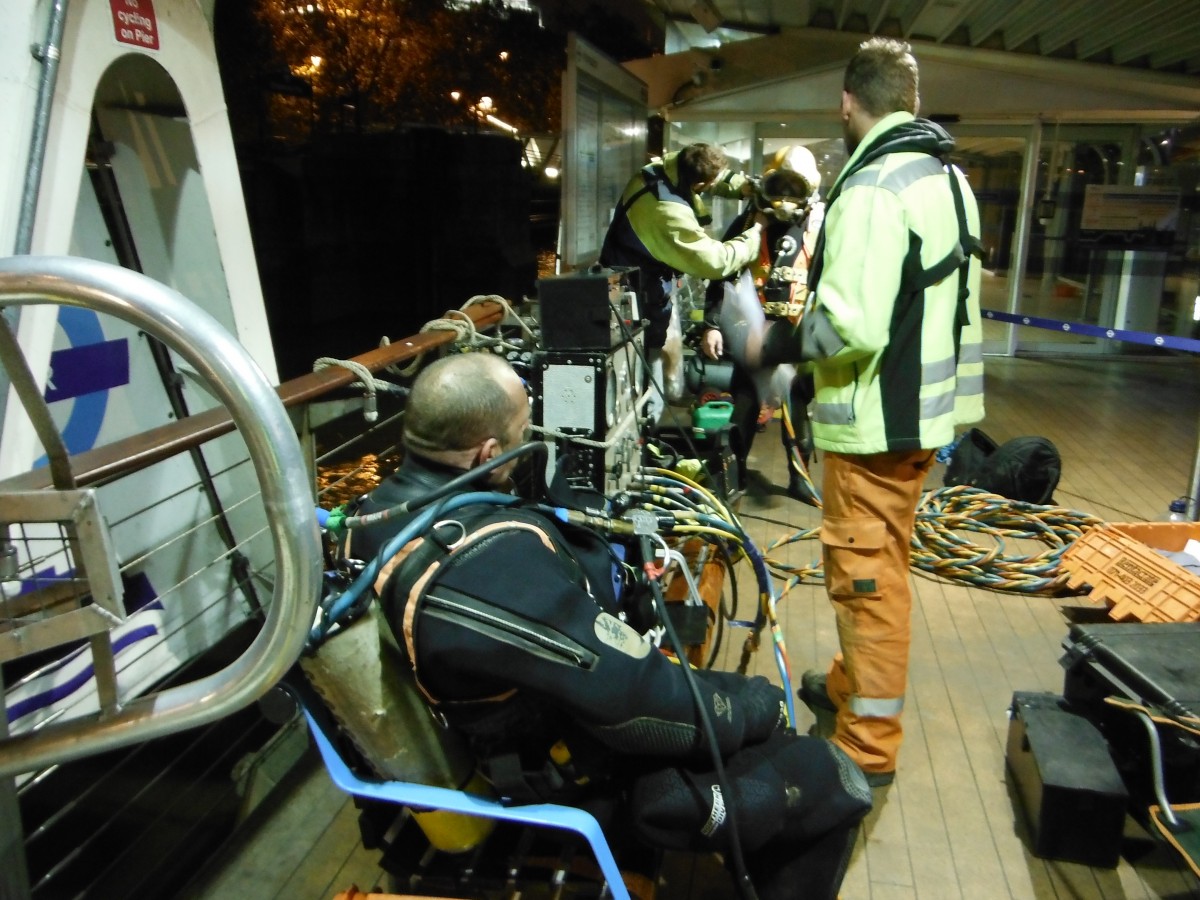November has seen us carrying out a lot of inspection works, including a number of underwater inspections on the Thames. While we always try to use other inspection methods where we can, such as side-scan sonar, there are occasions when only a diver can provide the information that is needed. For this work we have our own chartered diving engineer in David Tresidder and David has been very busy recently.
There are a number of challenges when carrying out diving work in the Thames; the current flows fast and slack water periods when diving is possible are short. Furthermore the Thames in central London is very busy with vessel movements and diving around the piers can consequently only be done at night when the pier can be closed to traffic. The third challenge is the river’s poor visibility which means that much of the inspection has to be done by touch. Fortunately our dive team is very experienced at this type of work and the diving inspections were successful in identifying simple solutions to what had previously seemed to be a challenging problem.
Being able to place an experienced engineer in the water to undertake a survey first hand adds significant value to the services we can offer, and avoids any misinterpretation or misunderstanding caused by using an inexperienced diver, which can be costly. Having our own engineering hands and eyes on the job enables us to develop the right solution for any identified issues more effectively, and our independence, combined with our experience of underwater works means we are able to develop the most appropriate and best value solution for our clients the first time round. Having a full appreciation of works underwater and how best to avoid any problems means that we are expertly equipped for all scenarios.




